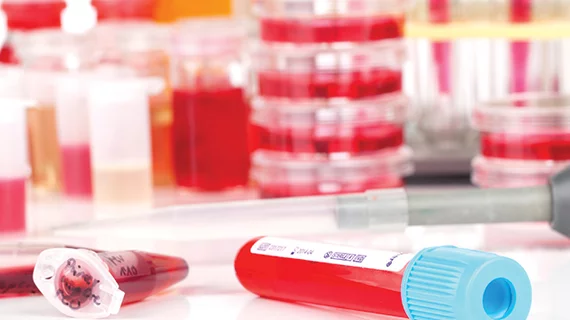Fewer reinfarctions, more resource use linked to high-sensitivity troponin adoption
The introduction of high-sensitivity cardiac troponin T (hs-cTnT) in Sweden was associated with an 11 percent reduction in reinfarctions among heart attack patients and increased use of coronary angiography and revascularization, according to a study published June 4 in the Journal of the American College of Cardiology.
However, mortality rates remained the same for patients tested with hs-cTnT versus conventional troponin—both of which use a 99th percentile threshold to rule in or rule out myocardial infarction (MI).
Lead author Maria Odqvist, MD, and colleagues studied more than 40,000 MIs diagnosed with each test from 2009 to 2013, the period when hospitals in Sweden were increasingly adopting the high-sensitivity assay.
Overall, hospitals diagnosed 5 percent more MIs in the first three months after adopting the new assay, but that trend varied widely among hospitals.
“In some hospitals, the introduction of the hs-cTnT assay was associated with a relatively large decline, whereas in others there was a relatively large increase in the number of MIs,” Odqvist et al. noted. “This may have been related to initial difficulties with interpretation of hs-cTnT levels. Indeed, in a recently published Swedish study, it was found that 60% of patients with a discharge diagnosis of unstable angina had hs-cTnT levels above the 99th percentile value.”
During an average 3.1 years of follow-up, the risk of reinfarction dropped by 11 percent in patients diagnosed with hs-cTnT. Meanwhile, the use of coronary angiography and revascularization increased by 16 and 13 percent, respectively.
Odqvist et al. said it is unclear whether the additional angiographies and revascularization procedures helped limit the risk of reinfarction, or if there were extra cases of overtreatment triggered by the more sensitive assay.
“Although many concerns about hs-cTn assays focus on identification of more patients with abnormal levels, the experience from Odqvist and others outside the United States should provide some reassurance that the increase in MI diagnoses will be modest and manageable,” L. Kristin Newby, MD, MHS, and Angela Lowenstern, MD, wrote in a related editorial. “Furthermore, the exquisite sensitivity of these assays, coupled with their enhanced precision, allows earlier MI rule-out with high negative predictive value, which holds promise to help safely decongest crowded EDs (emergency departments) and reduce costs.”
The editorialists, both from Duke University Medical Center, said hs-cTn will face hurdles in U.S. implementation considering the first such assay was approved by the FDA in January 2017. Meanwhile, they suggested learning from other countries which are further along in adopting the tests.
“It will be important to monitor outcomes during and after the transition and be prepared to adapt our approaches as we learn from the accruing data,” Newby and Lowenstern wrote. “Change is often unsettling and can bring challenges, but the benefits for our patients and health care systems with the transition to hs-cTn promise to be tremendous if we embrace the change and are active participants in shaping it.”

